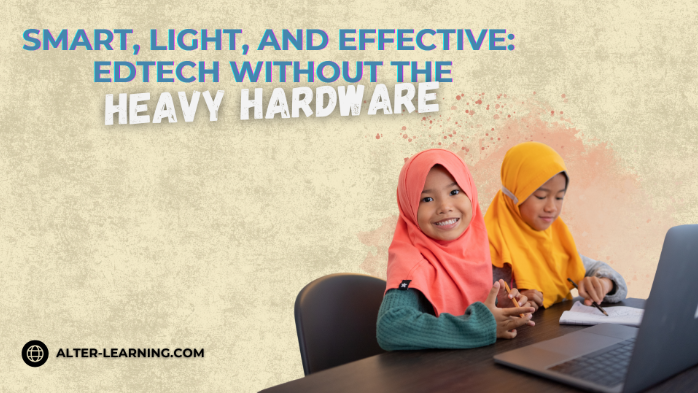In educational technology, accessibility isn’t an afterthought—it’s a core design principle that can ensure every learner has the opportunity to participate and succeed. When interactive STEAM learning tools and immersive environments are built with accessibility in mind, they can help break down barriers for students with different abilities, backgrounds, and learning preferences.
Alter-Learning’s approach to game design places inclusivity at the forefront, considering everything from physical accessibility to cognitive diversity. By integrating accessibility features early in the development process, educational games can become truly engaging for all learners—not just those who fit a standard user profile.
Why Accessibility in Educational Games Matters
Educational games can be powerful tools for learning—but only if every student can interact with them meaningfully. Accessible design can:
- Increase participation for students with physical or sensory impairments,
- Support neurodiverse learners with customizable features,
- Remove unnecessary barriers to understanding content,
- Encourage collaboration across diverse ability levels.
When students feel included, they are more likely to engage deeply with science games for kids, math puzzle games, engineering challenges for students, and other STEAM educational content.
Core Accessibility Features for Educational Games
Designing accessible games is a multi-layered process that can address various needs:
1. Adjustable Difficulty and Pacing
Games can include settings that allow players to change difficulty levels or progress speed. This flexibility helps:
- Support learners who need more time to process,
- Offer advanced challenges for students ready to go further,
- Reduce frustration and encourage persistence.
2. Visual Accessibility
Visual elements can be designed to ensure all players can perceive and understand information. Strategies may include:
- Colorblind-friendly palettes,
- High-contrast text and backgrounds,
- Scalable UI elements for readability.
3. Audio Accessibility
For players with hearing impairments, games can:
- Include captions or transcripts for all spoken content,
- Use visual indicators for sound-based cues,
- Offer adjustable audio levels for voice, music, and effects separately.
4. Motor Accessibility
Students with limited mobility can benefit from:
- Simplified control schemes,
- Keyboard-only navigation,
- Customizable input options (including adaptive controllers).
5. Cognitive Accessibility
For neurodiverse learners or those with learning differences, games can:
- Provide clear instructions and consistent layouts,
- Break challenges into smaller steps,
- Include tutorials or hint systems for support.
Accessibility in Immersive Technology
In VR education apps, AR learning experiences, and XR educational content, accessibility requires extra consideration. Alter-Learning’s immersive learning environments can incorporate:
- Audio cues to guide navigation for visually impaired learners,
- Teleportation or simplified movement options to reduce motion sickness,
- Multiple interaction modes (e.g., gesture, controller, or gaze-based).
By embedding these features in VR math games, AR science experiments, and interactive physics simulations, immersive experiences can remain inclusive while still being engaging and challenging.
Collaboration as an Accessibility Tool
Multiplayer and co-op features can be powerful for accessibility. By designing games where roles vary in complexity, students can contribute based on their strengths—whether solving 3D geometry puzzles, leading a virtual chemistry lab, or coordinating group strategy in an interactive simulation.
Collaborative learning environments can also encourage peer support, creating a social dynamic that helps all players succeed.
Making Accessibility Sustainable
Accessibility isn’t just about adding features—it’s about ongoing commitment. Alter-Learning’s process can involve:
- Consulting with educators and specialists during game creation,
- Testing with diverse student groups to identify and address barriers,
- Iterating continuously to improve accessibility options over time.
By making these efforts part of the development cycle, accessibility remains a priority rather than a one-time checklist.
An accessible educational game doesn’t just remove obstacles—it invites every student to participate fully, express their creativity, and engage with STEAM subjects on their own terms.
Through thoughtful design and inclusive practices, Alter-Learning’s immersive educational experiences can help transform classrooms into spaces where no student is left out of the adventure. When accessibility and innovation go hand in hand, the result can be learning that truly belongs to everyone.
Follow Alter-Learning for more insights into immersive education, edtech success stories, and the future of learning. Want to explore how VR/AR could transform your school or learning platform? Let’s connect.




